Sienna is an earth pigment containing iron oxide and manganese oxide. In its natural state, it is yellowish brown, and it is called raw sienna. When heated, it becomes a reddish brown, and it is called burnt sienna. It takes its name from the city-state of Siena, where it was produced more widely during the Renaissance. Along with ochre and umber, it was one of the first pigments to be used by humans, and is found in many cave paintings. Since the Renaissance, it has been one of the brown pigments most widely used by artists.

Brown is a color. It can be considered a composite color, but it is mainly a darker shade of orange. In the CMYK color model used in printing and painting, brown is usually made by combining the colors orange and black. In the RGB color model used to project colors onto television screens and computer monitors, brown combines red and green.

A pigment is a colored substance that is completely or nearly insoluble in water. In contrast, dyes are typically soluble, at least at some stage in their use. Generally dyes are often organic compounds whereas pigments are often inorganic compounds. Pigments of prehistoric and historic value include ochre, charcoal, and lapis lazuli.
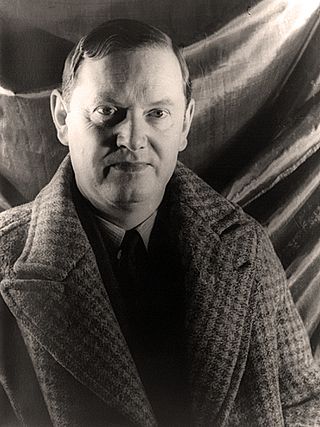
Arthur Evelyn St. John Waugh was an English writer of novels, biographies, and travel books; he was also a prolific journalist and book reviewer. His most famous works include the early satires Decline and Fall (1928) and A Handful of Dust (1934), the novel Brideshead Revisited (1945), and the Second World War trilogy Sword of Honour (1952–1961). He is recognised as one of the great prose stylists of the English language in the 20th century.

William Holman Hunt was an English painter and one of the founders of the Pre-Raphaelite Brotherhood. His paintings were notable for their great attention to detail, vivid colour, and elaborate symbolism. These features were influenced by the writings of John Ruskin and Thomas Carlyle, according to whom the world itself should be read as a system of visual signs. For Hunt it was the duty of the artist to reveal the correspondence between sign and fact. Of all the members of the Pre-Raphaelite Brotherhood, Hunt remained most true to their ideals throughout his career. He was always keen to maximise the popular appeal and public visibility of his works.

Watercolor or watercolour, also aquarelle, is a painting method in which the paints are made of pigments suspended in a water-based solution. Watercolor refers to both the medium and the resulting artwork. Aquarelles painted with water-soluble colored ink instead of modern water colors are called aquarellum atramento by experts. However, this term has now tended to pass out of use.

Umber is a natural earth pigment consisting of iron oxide and manganese oxide; it has a brownish color that can vary between shades of yellow, red, and green. Umber is considered one of the oldest pigments known to humans, first seen in Ajanta Caves in 200 BC-600 AD. Umber's advantages are its highly versatile color, warm tone, and quick drying abilities. While some sources indicate that umber's name comes from its geographic origin in Umbria, other scholars suggest that it derives from the Latin word umbra, which means "shadow." The belief that its name derives from the word for shadow is fitting, as the color helps create shadows. In addition, the color is primarily imported from Turkey, specifically Cyprus, and not Italy. Umber is typically mined from open pits or underground mines and ground into a fine powder that is washed to remove impurities. In the 20th century, the rise of synthetic dyes decreased the demand for natural pigments such as umber.

Samuel Bell Waugh was a 19th-century American portrait, landscape, and moving panorama painter. His portrait subjects included Presidents Abraham Lincoln and Ulysses S. Grant.

A stag film is a type of pornographic film produced secretly in the first two-thirds of the 20th century. Typically, stag films had certain traits. They were brief in duration, were silent, depicted explicit or graphic sexual behavior intended to appeal to men, and were produced clandestinely due to censorship laws. Stag films were screened for all-male audiences in fraternities or similar locations; observers offered a raucous collective response to the film, exchanging sexual banter and achieving sexual arousal. In Europe, stag films were often screened in brothels.

Everett Longley Warner was an American Impressionist painter and printmaker, as well as a leading contributor to US Navy camouflage during both World Wars.

Frederick Judd Waugh was an American artist, primarily known as a marine artist. During World War I, he designed ship camouflage for the U.S. Navy, under the direction of Everett L. Warner.
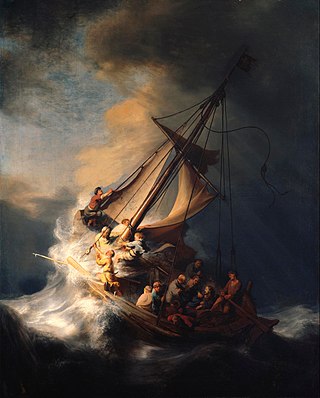
Marine art or maritime art is a form of figurative art that portrays or draws its main inspiration from the sea. Maritime painting is a genre that depicts ships and the sea—a genre particularly strong from the 17th to 19th centuries. In practice the term often covers art showing shipping on rivers and estuaries, beach scenes and all art showing boats, without any rigid distinction - for practical reasons subjects that can be drawn or painted from dry land in fact feature strongly in the genre. Strictly speaking "maritime art" should always include some element of human seafaring, whereas "marine art" would also include pure seascapes with no human element, though this distinction may not be observed in practice.
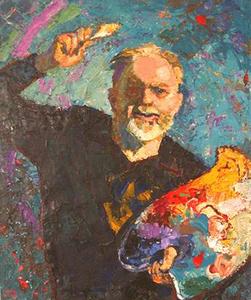
Frederick Coulton Waugh was a cartoonist, painter, teacher and author, best known for his illustration work on the comic strip Dickie Dare and his book The Comics (1947), the first major study of the field.
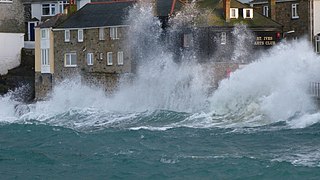
The St Ives School refers to a group of artists living and working in the Cornish town of St Ives. The term is often used to refer to the 20th century groups which sprung up after the First World War around such artists as Borlase Smart, however there was considerable artistic activity there from the late 19th Century onwards.

A Bigger Splash is a large pop art painting by British artist David Hockney. Measuring 242.5 centimetres (95.5 in) by 243.9 centimetres (96.0 in), it depicts a swimming pool beside a modern house, disturbed by a large splash of water created by an unseen figure who has apparently just jumped in from a diving board. It was painted in California between April and June 1967, when Hockney was teaching at the University of California, Berkeley. Jack Hazan's fictionalised 1973 biopic, A Bigger Splash, concentrating on the breakup of Hockney's relationship with Peter Schlesinger, was named after the painting.
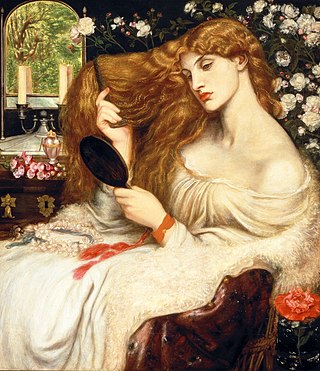
Lady Lilith is an oil painting by Dante Gabriel Rossetti first painted in 1866–1868 using his mistress Fanny Cornforth as the model, then altered in 1872–73 to show the face of Alexa Wilding. The subject is Lilith, who was, according to ancient Judaic myth, "the first wife of Adam" and is associated with the seduction of men and the murder of children. She is shown as a "powerful and evil temptress" and as "an iconic, Amazon-like female with long, flowing hair."
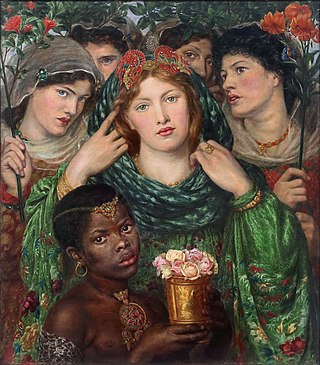
The Beloved is an oil painting on canvas by the English artist Dante Gabriel Rossetti (1828–1882), now in Tate Britain, London. Rossetti signed his initials and the date as "1865-6" on the bottom left of the canvas. It depicts the bride, or "beloved", from the Song of Solomon in the Hebrew Bible as she approaches her bridegroom, with her attendants.
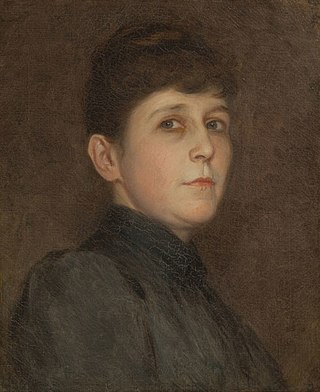
Ida Waugh was an American illustrator of children's literature who often collaborated with her lifelong companion, Amy Ella Blanchard.

The Roaring Forties is a 1908 oil painting by Frederick Judd Waugh. The painting depicts a turbulent seascape in the Roaring Forties, the part of the Southern Hemispheric Ocean between the latitudes of 40 and 50 degrees famed for its dangerous storms. Along with Wild Weather, the work is one of two seascape paintings by Waugh on display at the Metropolitan Museum of Art.

The Clan of Munes is a fantasy novel and children's book by American painter and illustrator Frederick Judd Waugh. The self-illustrated novel was published by Charles Scribner's Sons in 1916 and remained the only book published by the popular marine painter.



















